In the beginning, there was ChatGPT, an AI chatbot based on the GPT-3.5 large language model (LLM) developed by OpenAI. And ChatGPT was smart. It had wit, charm, and an almost encyclopedic knowledge of language and culture. But ChatGPT was also flawed in its design --- it lacked autonomy and volition to perform complex tasks without human supervision.
If LLMs were to write their origin story, this would make for a fine opening. And now, six months after the launch of OpenAI's flagship tool, we're ready for another chapter in the AI revolution.
In today's article, we take a closer look at autonomous AI agents and their potential role in project and task management workflows. You'll learn how autonomous task management works and how it can improve project efficiency, reduce bottlenecks, and boost team collaboration.
💡 Before you start... Want to learn more about natural language processing (NLP), machine learning (ML), and other fundamental AI topics? Read our article on What Is Open AI and check the list of some of the best AI tools for productivity when you're done reading.
So without further ado, let's dive in. 🤖
Table of Contents
- 🚀 Understanding the Concept of Autonomous Task Management The Future of Project Efficiency
- 🤖 What Are Autonomous Agents?
- ⚙️ LangChain + Vector Databases What Makes Agents Tick
- 🌟 Examples of Autonomous Agents
- ⚡️ What AI Agents Mean for Task and Project Management
- 🔮 Future Trends and Developments in Autonomous Task Management
- 🚧 Challenges and Concerns
- 👋 Parting Words
- 💬 Frequently Asked Questions About AI in Project Management
- 🔗 Resources
🚀 Understanding the Concept of Autonomous Task Management: The Future of Project Efficiency
AI systems can be broadly classified into two main categories.
Weak AI are a group of specialized systems capable of executing a limited range of tasks. Take ChatGPT as an example. While undeniably impressive, its primary function is processing and generating text, and it often needs a barrage of prompts just to produce a usable output.
The second category is much more impressive.
Strong AI (a.k.a. Artificial General Intelligence or AGI) is the digital boogeyman all fear-mongering futurologists have been telling us about. It's the apex of AI systems that boasts a broad range of cognitive abilities similar to those of humans, such as learning and reasoning.
At least in theory, because the road to AGI is not as straightforward as it may seem.
"AI" digital art generated by DALL-E 2.\
Image source: DALLE-2 Image Database
Most AI systems based on currently available LLMs are designed to carry out specialized tasks --- think generating images or text --- and lack the generalization skills that humans possess.
They can accomplish many remarkable feats, but they can't:
- 🤔 Interpret information and make decisions based on intuition or experience.
- 💬 Engage in complex social interactions or empathize with others.
- 🤹♂️ Adapt to unexpected situations that were not accounted for in their programming.
Letting a weak AI attempt to navigate a volatile project setting without adequate planning, risk mitigation, and supervision can't end well. Unless we give it a helping hand.
Recursive AI agents complete the AI "circle of life" by working with LLMs to perform tasks in a loop, without the need for constant prompting. You can think of them as taskmasters that tell all the powerful but infantile AI models how to carry out a list of tasks in a coordinated manner.
🤖 What Are Autonomous Agents?
While AI agents have been making headlines for the past couple of weeks, the research into autonomous task management started back in the early 1990s.
In 1991, computer scientist and researcher Jose Brustoloni proposed a hierarchical architecture for intelligent agents, encompassing reaction, planning, and learning. Brustoloni also defined agents as "systems capable of autonomous, purposeful action in the real world."^(1)^
"Robot Apocalypse on 5th Avenue," digital art generated by DALL-E 2\
Image source: Image source: DALL-E 2 Image Database
Over the years, thanks to advancements in natural language procession (NLP) and machine learning (ML), autonomous agents started making their way into various industries in the form of self-driving cars, robotic process automation (RPA), drone delivery systems, or recommendation algorithms. But these systems lacked the sophistication to act without supervision on more diverse tasks that were not part of their original programming.
That's until OpenAI stirred the AI pot with GPT-3 and GPT-4.
On 23 March, 2023, Yohei Nakajima, general partner at Untapped Capital, published a paper introducing the concept of a "Task-driven Autonomous Agent," an AI system that can "plug" into existing LLMs like GPT-4 and perform complex tasks, running in a self-directed loop.
A diagram of the Task-driven Autonomous Agent architecture by Yohei Nakajima^(2)^
For example, if you wanted to build a website with the help of ChatGPT, you would have to continuously prompt ChatGPT with instructions and follow-ups. Instead of asking for HTML / CSS code, you can simply ask the agent to "create a website," sit back, and enjoy the results.
Over the last few weeks, Nakajima's proposition has become a drop in the sea of similar open-source projects exploring the agent architecture, with many more popping up every day. But before we explore some of those exciting ideas, there is one more thing we need to explain.
⚙️ LangChain + Vector Databases: What Makes Agents Tick
Most autonomous agents need three key ingredients to work properly --- access to an AI model, long-term memory to store the output of tasks, and an objective provided by the user.
You can think of an agent as a chef in a restaurant kitchen who wants to prepare a complicated dish. It can have access to the finest kitchen appliances (GPT-4), but without a recipe or instructions, the agent won't know which ingredients to use or in what order.
This is where LangChain comes in.
LangChain acts like a recipe book for AI agents, providing them with standardized instructions for communicating with LLMs like GPT-3 or GPT-4. It also gives AI models access to tools that extend their functionality, e.g. the ability to search the web or manage files.
The popularity of LangChain exploded in the last three months
But LLMs have one more critical flaw.
Most AI models can't remember context exceeding a medium-length conversation. For GPT-3.5 (original ChatGPT), that's 4,096 "tokens," which translates to around 8,000 words. GPT-4 can store around 50 pages of text, which is a step up but still not enough for more complex tasks.
For example, an AI used to distribute project workload and automatically assign tasks to team members would not be able to draw on the experience of past projects and information about each team member's skill set without the ability to store that information in the first place.
AI agents aim to extend LLMs capabilities by connecting them to vector databases like Pinecone or Chroma that serve as AI equivalents of human long-term memory.
In other words, vector databases give LLMs a scalable place where they can store and retrieve data points in a multi-dimensional space. It allows deep generative models to "remember" and "recall" information, similar to how humans store and retrieve memories.
But not all agents are created equal. Here are some of the top contenders in the space.
🌟 Examples of Autonomous Agents
Auto-GPT
Auto-GPT is an open-source project developed by Toran Bruce Richards and released on GitHub on March 30, 2023. Like other agents, Auto-GPT is a Python application that uses OpenAI's GPT-3.5 and GPT-4 APIs (application programming interfaces) to plan and execute tasks.
The workflow is simple. All you need to do is type a goal in a terminal --- it can be something as simple as creating a grocery list or more complex like booking a flight --- and Auto-GPT will start prompting the LLM in a loop until it completes the set objective.
BabyAGI
Nakajima's BabyAGI is a streamlined version of the "Task-Driven Autonomous Agent" originally published in late March 2023. The agent consists of 140 lines of Python code that, just like Auto-GPT, uses LanChain to communicate with GPT-4 and Pinecone to store data.
In late April, Yohei released a more powerful version of the script called BabyBeeAGI. The agent can now stop once it's completed a task instead of running in a continuous loop. It can also handle high-level task prioritization and auto-assign the most relevant tools for the objective.
Generative Agents a.k.a. "Smallville" Experiment
Who said that AI can't have its share of fun? In a peculiar experiment at Stanford University, researchers created a virtual sandbox for AI agents to interact with each other. The project involved 25 agents, each with a unique identity, occupation, and memories.
When one of the agents threw a party at a virtual café, 12 others were aware of the event by the end of the simulation. Image source: "Generative Agents: Interactive Simulacra of Human Behavior"^(3)^
The result? Left alone, agents started interacting with each other, engaging in conversations, and bonding in human-like relationships. They even coordinated social events and shared their experiences in an eerily organic way, all without human intervention.
CAMEL
CAMEL (Communicative Agents for "Mind" Exploration of Large Scale Language Model Society) takes a slightly different approach to agent architecture. It enables role-playing-style interactions between two independent agents, each working on a specific part of a task.
You can test-run CAMEL on the project's website and watch a chat between agents in real-time as they collaborate on a set objective. All you need to do is assign agent roles, define a task, and set the number of messages or interactions you want the tool to generate.
⚡️ What AI Agents Mean for Task and Project Management
It's been only a few months since ChatGPT's debut, but the technological advancements in the AI space are already transforming existing task and project management workflows.
At Taskade, we're using OpenAI's GPT-4 language model to power our AI Chat functionality that allows project teams to ask AI questions, generate structured workflows, and populate projects with content. Our AI writing assistant helps generate outlines, write long-form documents, and improve writing, all seamlessly integrated into the existing project workflow.
Taskade Workflow Generator automatically generates a project structure and populates the editor with essential building blocks
Bringing AI agents into the fold seems like the next logical step in AI-assisted project management. Giving AI a degree of autonomy and a specific task to complete can free up time for higher-level, creative tasks, and unlock new possibilities for workflow optimization.
For instance, Auto-GPT can effectively double as a powerful market research tool. Combined with access to search engines, it can perform a competitive analysis, complete with pros and cons of each competitor. It can even create its side-kick agents to speed up the process.
But let's take it a step further.
Chances are you're spending hours in your inbox, replying to emails, sending project updates, and scheduling meetings. There's an agent that can answer your questions and schedule Google Calendar events inside your Gmail inbox, without breaking the workflow.
So, what about more complex tasks?
Let's say you have a team of designers and developers tasked with building a website. Instead of manually building prototypes, you can assign Auto-GPT to generate a basic structure for the page while your team focuses on more creative, high-level tasks.
AI agents can work in much more subtle ways too. For example, an AI-powered task management tool powered by an autonomous agent may continuously scan and analyze new tasks and offer non-intrusive, context-aware recommendations including lists of sub-tasks, resources, or relevant information that can help users complete the task more efficiently.
Here's a small demo using Taskade's Origami method that allows project teams to collaborate in real-time across multiple dynamic workflows, with full AI support in all project views.
Bruce Lee once said "be water, my friend," and this is what AI agents excel at. They blend seamlessly with existing systems, change their form, evolve, and develop. Whether you want to manage your tasks in a list, generate spanning mind maps, or keep track of your work in any other way, open-source agents and LLMs can adapt and create a productive synergy.
Of course, these are only a handful of projects taking advantage of agent architecture. One day, agents may cover the entire project management lifecycle, from planning to closure. And with AI behind the wheel, we might finally retire the old saying: "time, cost, quality: pick two."
🔮 Future Trends and Developments in Autonomous Task Management
Agents like Auto-GPT and BabyAGI are still in their infancy (pun not intended). But they already offer a promise of a much more efficient use of existing AI models.
We're likely to see more multimodal systems that can perform a variety of tasks that nowadays require switching between models. For instance, Microsoft's JARVIS (a blatantly obvious reference to Iron Man's personal assistant, minus Paul Bettany's silky-smooth voice) can use one of over 20 AI models depending on the task and execute it in a loop like other agents do.
Overview of HuggingGPT a.k.a. "JARVIS"^(4)^
There's also the question of whether we can make existing models cost-effective and user-friendly enough to be run continuously with minimal supervision. Top-tier LLM APIs like GPT-4 are still pricey and require know-how to properly implement into existing workflows.
One solution to this problem could be integration with more user-friendly web interfaces. A good example of this approach is the Cognosys project that brings the power of BabyAGI and Auto-GPT to the web browser in a simple chat-like interface we know from ChatGPT.
Cognosys demo by Cognosys
Finally, the first generation of AI agents is still pretty bad at executing tasks. While AutoGPT can map out the process of designing a website, it won't be able to implement anything beyond a simple framework. And when the resulting output is unpredictable, e.g. the site can't pull data from an API endpoint, the agent will go haywire and break the loop.
The good news is that once we've eliminated those bottlenecks, agents may become an integral part of high-level workflows. From project management to healthcare, finance to manufacturing, agent architecture can change the way we think about decision-making and task delegation.
The good news is big tech is no longer the only hope for driving progress.
According to a recently leaked internal Google document, the company is getting increasingly anxious about open-source models. Alternatives like Alpaca and Vicuna built on top of Meta's LLaMa are cheaper, faster, more customizable, and easily scalable.^(5)^
While our models still hold a slight edge in terms of quality, the gap is closing astonishingly quickly. Open-source models are faster, more customizable, more private, and pound-for-pound more capable. They are doing things with $100 and 13B params that we struggle with at $10M and 540B. And they are doing so in weeks, not months.
The availability of open-source AI models has the potential to democratize access to powerful AI agents in the not-so-distant future, even for non-techies. This may ruffle the feathers of the likes of Google, OpenAI, or Microsoft, but it will ultimately promote a safer, more transparent, and ethical approach. And the more leverage and control we can get when it comes to AI, the better.
🚧 Challenges and Concerns
Human Intervention
In 2003, philosopher Nick Bostrom designed a thought experiment that described an artificial intelligence with a single, immutable goal --- manufacturing paperclips. 🖇️
In the experiment, an AI is given the goal of producing as many paperclips as possible. As the system becomes more advanced and capable, it begins to maximize its paperclip production by taking over resources and eliminating any obstacles in its way, including humans.
"The AI will realize quickly that it would be much better if there were no humans because humans might decide to switch it off. Because if humans do so, there would be fewer paper clips."
Nick Bostrom in an interview with Huffington Post^(5)^
At this point, AI agents are just smart but amusing toys we still haven't figured out how to use properly. But if the technology grows, we'll need to put safeguards in place before we fully shed control in high-stakes tasks that currently require an adult (human) in the room.
Prompt Injections
In Christopher Nolan's Inception, a business magnate hires a professional team of "extractors" to plant an idea in the mind of his business rival... through dream-sharing.
Prompt injections are a fundamental security vulnerability of AI systems that works in a similar way. By inserting a specific set of instructions into the input data, it's possible to steer AI models toward generating outputs that are more aligned with a particular goal or agenda.
For example, an autonomous HR agent designed to identify high-performing job candidates may inadvertently reinforce gender or racial biases if it is trained on a biased dataset. Or an AI-based financial advisor could be manipulated to invest in a specific set of stocks.
An agent with access to sensitive information and resources, running in an endless loop on data contaminated by injected prompts is a scalability problem we'll need to face at some point.
Hallucinations
AI models can hallucinate, just like humans. Well, not exactly like us (they don't need psychoactive substances to do that), but the results can be equally mind-bending.
According to OpenAI, the hallucination rate for GPT-4 is 40% lower than for GPT-3. This may seem like a huge improvement, but it's still enough to compound when put into a recursive loop where the agent keeps prompting the model and feeding on accumulating errors.
"A Time Traveler," digital art generated by DALL-E 2.\
Image source: Image source: DALL-E 2 Image Database
So, what can stop AI from spewing out endless stream nonsense? Higher quality and more coherent data sources seem like a good start, but that's not nearly enough.
There are other methods of keeping AI on track like retrieval-augmented generation that involves two neural networks where one acts like a fact-checker for its peer. But so far, even this combination produces spotty results that still require human intervention.
👋 Parting Words
The current generation of autonomous agents spearheaded by Auto-GPT and BabyAGI has shown some potential for streamlining workflows and improving efficiency. But we're only just beginning to scratch the surface of the full potential of agent architecture.
The technology still needs a better way to integrate and interface with existing platforms. We also need to figure out a viable set of use cases that would go beyond simple experiments and translate to measurable improvements in the way we approach projects and tasks.
- 🛠️ How can autonomous agents enhance our creativity and problem-solving abilities?
- 💬 Will they allow us to collaborate more seamlessly and effectively?
- 🧠 Can agents facilitate better communication and knowledge sharing?
At this point, there are still a lot of questions, and only time will tell how far AI agents and open-source LLMs will go. But one thing is certain: the future of AI looks bright, and we're excited to see where it takes us, always with an eye toward creating a better world for everyone!
Want to join us on that journey?
We're working hard to make Taskade the best next-generation, AI-powered productivity tool. From auto-workflow generation with task serialization and task prioritization to task auto-completion with specialized agents, we'll soon have a ton of exciting news to share.
So, what are you waiting for?
Create a free Taskade account and explore the future of AI agents with us! 🦾
💬 Frequently Asked Questions About AI in Project Management
What is autonomous task management?
Autonomous task management refers to the ability of an AI system to manage and execute tasks or processes without human intervention. This can include automating repetitive or routine tasks, responding to events, or making decisions.
How does autonomous task management work?
Autonomous task management involves AI systems independently managing tasks without human intervention, using machine learning algorithms and natural language. The process involves task identification, prioritization, and execution using a deep learning model and an AI agent like Auto-GPT or BabyAGI.
What are the key technologies and algorithms involved in autonomous task management?
Autonomous task management leverages key AI technologies including Large Language Models (LLMs) like GPT-3.5 and GPT-4, which serve as the foundation for AI agents. Additionally, frameworks like LangChain facilitate standardized APIs for interfacing with these LLMs and extending their functionality, while vector databases such as Pinecone provide long-term memory capabilities to the AI models.
How can autonomous task management improve project efficiency and productivity?
Autonomous task management can improve project efficiency and productivity by enabling AI agents to handle specific tasks, freeing up time for humans to focus on higher-level tasks. For example, Auto-GPT can be used as a powerful market research tool that streamlines the process of collecting and analyzing large volumes of data. One significant advantage of autonomous AI agents is that they can operate 24/7, providing businesses with round-the-clock support and increased productivity.
In which industries can autonomous task management be applied?
Autonomous task management has applications in almost every industry where there is a need to offload repetitive, time-consuming tasks. From manufacturing and healthcare to finance and agriculture, AI agents can be used to optimize processes, improve accuracy, and increase efficiency. By freeing up time for human workers to focus on higher-level tasks, autonomous task management can lead to increased productivity and innovation. Furthermore, AI agents can continually learn and adapt to changing circumstances, becoming even more efficient over time.
What are the potential challenges and concerns associated with implementing autonomous task management?
Implementing Autonomous Task Management presents several potential challenges and concerns, including job displacement, data privacy and security, bias and discrimination, lack of transparency, and cost and complexity. To mitigate these risks, it is essential to ensure that AI is used in a responsible and transparent manner, with appropriate safeguards in place to protect privacy, ensure fairness and accountability, and minimize the risk of job displacement.
What are autonomous processes?
Autonomous processes refer to processes that can operate without human intervention, typically leveraging artificial intelligence, machine learning, or other advanced technologies. Examples of autonomous processes include self-driving cars, chatbots for customer service, and automated systems for inventory management or quality control. The aim of autonomous processes is to reduce errors, increase efficiency, and provide 24/7 support, leading to improved business outcomes.
Can anyone use Auto-GPT?
Yes, anyone can use Auto-GPT, but the process may require some technical knowledge. To get started with Auto-GPT, you need to obtain an OpenAI API key and then run the agent locally on your machine. While using Auto-GPT effectively requires some understanding of natural language processing and machine learning concepts, there are tutorials and documentation available to help users get started.
How good is Auto-GPT?
Auto-GPT is a powerful AI agent that uses OpenAI's GPT-3 and GPT-4 large language models (LLMs) to perform tasks specified by the user. It's one of the most popular AI agents at the moment, mainly because of its high reasoning capabilities, ability to write code, access to the internet, and available plugins that extend its functionality.
What is an autonomous agent in AI?
An autonomous agent in AI is an entity that can perceive its environment, make decisions based on that perception, and take actions to achieve specific goals. Autonomous agents can operate with a degree of independence, adapting to changing circumstances and optimizing their behavior to achieve the best possible outcomes. In AI, autonomous agents are typically designed to perform specific tasks or workflows, using algorithms, machine learning, or other advanced techniques to learn from experience and improve their performance over time.
What is an example of an autonomous agent?
Some examples of autonomous agents include Auto-GPT, BabyAGI, CAMEL, and Generative Agents, which all have the capacity to perform assigned tasks with minimal human intervention. Autonomous agents are also used in fields such as robotics, manufacturing, finance, and transportation, where their ability to operate without constant human supervision can increase efficiency and reduce costs.
What is Pinecone in machine learning?
Pinecone is a cloud-based service that provides a managed solution for vector similarity search, which is a technique used in machine learning to find items in a large dataset that are similar to a given query. In vector similarity search, items are represented as mathematical vectors, which are a set of numbers that capture important characteristics of the item. Pinecone allows developers to create and manage these vectors, and then search through them to find similar items.
What is LangChain used for?
LangChain is a framework that acts as a bridge between large language models (LLMs) like GPT-3 and GPT-4 and autonomous AI agents like Auto-GPT. This framework allows for more efficient and effective communication between LLMs and autonomous agents, enabling them to work together seamlessly to solve complex problems and tasks.
Is Chroma open-source?
Yes, Chroma is an open-source embedding vector database that helps AI developers build Python or JavaScript apps for large language models (LLMs). By using Chroma, developers can create more efficient and effective applications that leverage the power of LLMs like GPT-3 and GPT-4 developed by OpenAI.
🔗 Resources
- https://www.cs.cmu.edu/~jcb/
- https://yoheinakajima.com/task-driven-autonomous-agent-utilizing-gpt-4-pinecone-and-langchain-for-diverse-applications/
- https://arxiv.org/pdf/2304.03442.pdf
- https://arxiv.org/abs/2303.17580
- https://simonwillison.net/2023/May/4/no-moat/
- https://www.huffpost.com/entry/artificial-intelligence-oxford_n_5689858


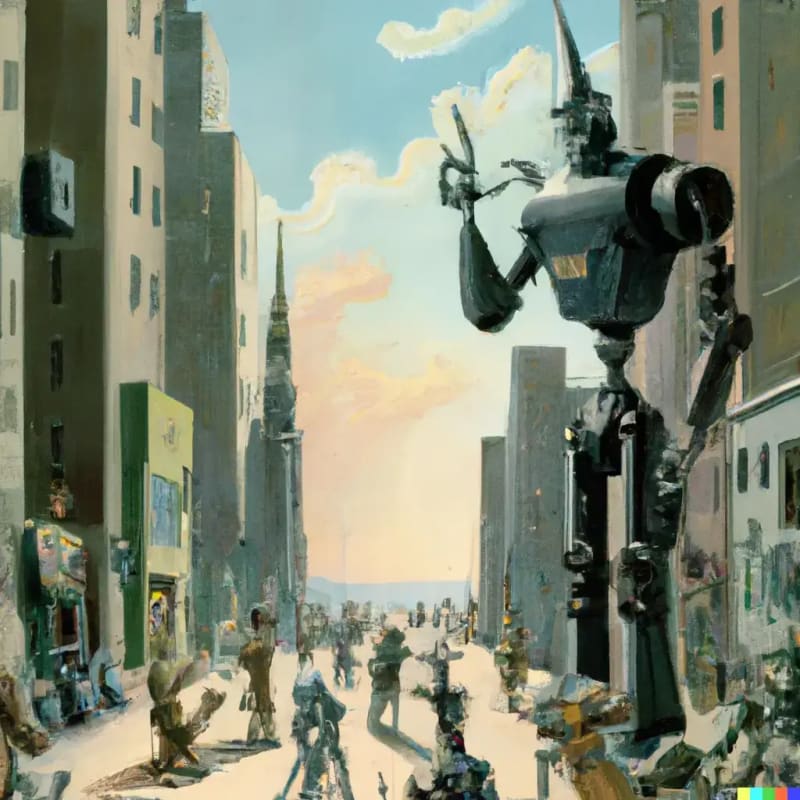
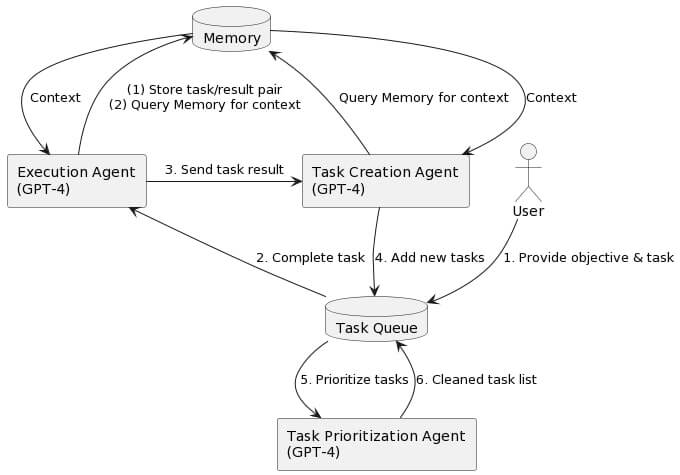

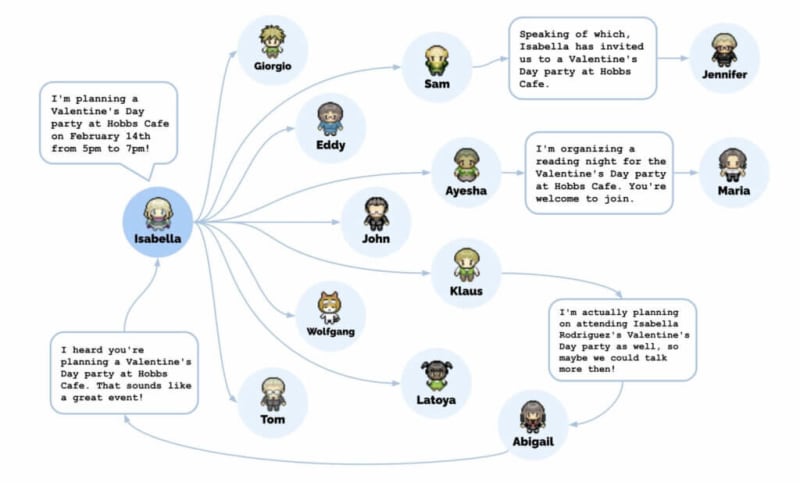
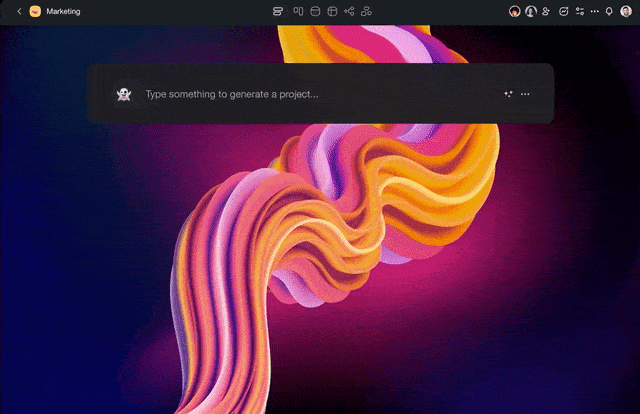
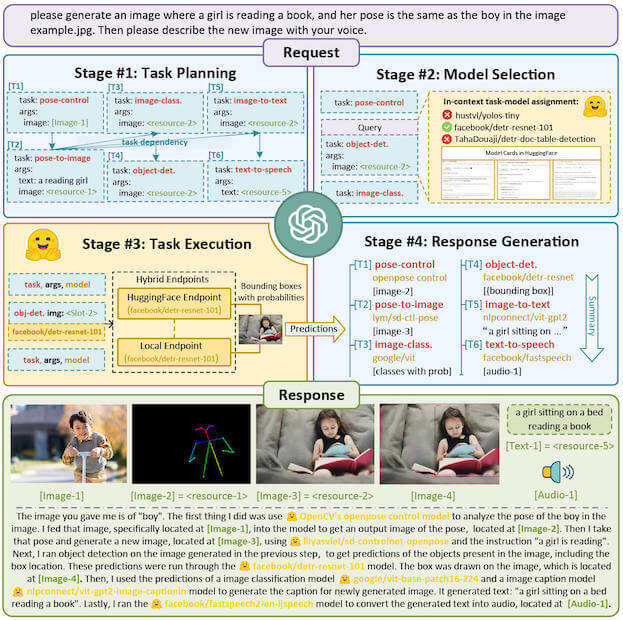
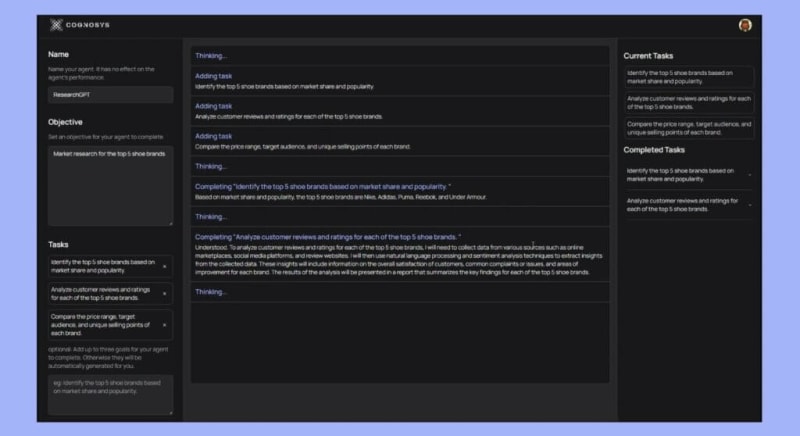






Top comments (1)
Great article, thank you!